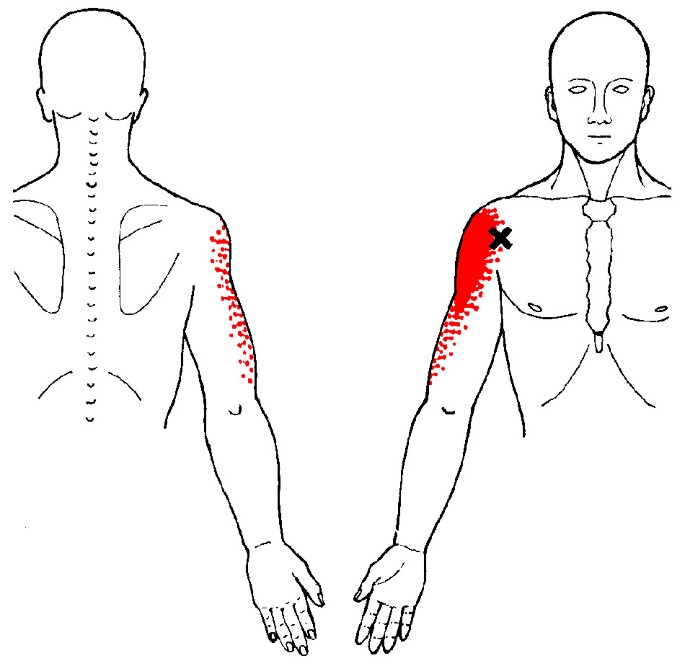

The QL Claw was designed to optimally massage the 5 muscles that contribute to low back pain, including the Psoas and Iliacus hip flexor muscles. How do you release the Iliopsoas trigger points? A great way to release Psoas and Iliacus trigger points is using the QL Claw device. If you suspect Psoas trigger points contribute to your pain, make sure to pass frequent movements or your pain could worsen. A hypertrophied psoas muscle can compress the neighboring large bowel" p. "Patients with constipation who also have psoas TrPs (trigger points) may experience referred pain evoked by the passage of a bolus of hard feces that presses against the TrPs.
Travell and simons referred pain patterns full#
It turns out that a full bowel can place additional pressure on the Psoas portion of the Iliopsoas complex. Travell & Simons left no stone unturned in their myofascial pain analysis. Such radiating pain patterns may imitate sciatica 6, which. Referred pain patterns above are shown for single-sided Iliopsoas trigger points and tightness.ģ. referred to our pain clinic after initially being diagnosed with lumbar radiculitis. Pain is commonly felt on both sides of the low back (pictured is pain from just one side Iliopsoas comples, but both sides are generally tight together causing pain on both sides of the low back). As shown in the left figure below, Iliopsoas trigger points can cause nasty low back pain in the lumbar spine region. The importance of the local twitch response. Lidocaine injection versus dry needling to myofascial trigger point. Iliopsoas trigger points are known to refer pain to the low back and the front of the upper thigh. Travell & Simons’ Myofascial pain and dysfunction: the trigger point manual. If you stay hunched over after standing up to prevent back and hip pain, the Iliopsoas muscles should be examined for trigger points.Ģ. Standing up with shortened Iliopsoas muscles (hip flexors) puts a lot of pressure on the low back, and can prevent one from standing completely upright. With this issue sitting can feel comfortable, but standing up from sitting can be difficult and painful. Iliopsoas trigger points shorten the hip flexor muscles in the front of the hip. Chances are also high you spend too much time sitting. If you have Iliopsoas problems, chances are you are in a world of hurt. Thus, myofascial pain of the PQ should be considered as a possible cause of pain in the medial forearm and hand, especially when no other neurological abnormalities are present.1. The pain patterns originating from the PQ resemble the C8-T1 dermatomes, and ulnar and median nerve sensory distributions. The second main pattern revealed pain spreading distally to the third and/or fourth finger (29%). In half of these cases, the pain area extended to the medial epicondyle proximally and the fifth digit distally. The most common pattern involved pain spreading both distally and proximally from the injection site, along the medial aspect of the forearm (57%).


Subjects drew in their pain areas on a pain diagram, and this drawing was transferred into the Pain Chart System ® for analysis. All the upper and lower extremity pain patterns and their corresponding trigger points are clearly illustrated on two convenient wall charts, ideal for patient.
Travell and simons referred pain patterns manual#
Following skin sterilization, a Teflon-coated syringe needle was inserted into the PQ of the non-dominant forearm under electromyographic guidance, and 0.3 mL of 6% hypertonic saline was injected. Neuware - Travell, Simons & Simons Myofascial Pain and Dysfunction: The Trigger Point Manual has been hailed as the definitive reference on myofascial pain and locating trigger points. Thirty-five arms of 35 healthy adult volunteers with no history of neck pain, arm pain or paresthesia were studied. The purpose of this study was to determine the referred pain pattern of the TrP in the PQ. However, there are no published reports on the referred pain patterns for the pronator quadratus (PQ) muscle. Pain patterns of the myofascial trigger points (TrP) for most muscles of the forearm have been documented.


 0 kommentar(er)
0 kommentar(er)
